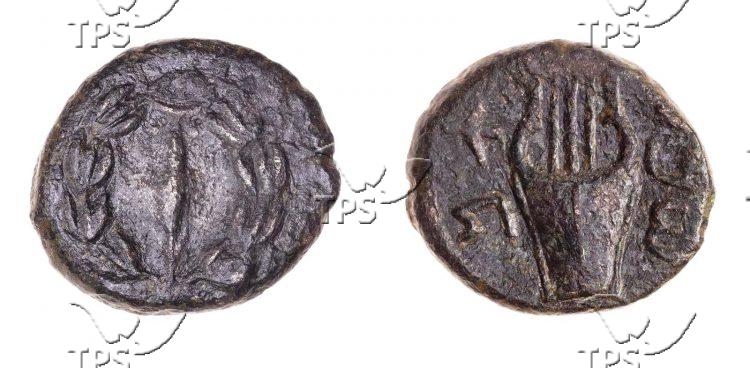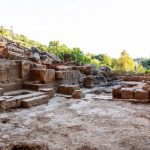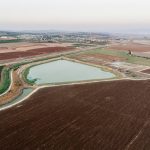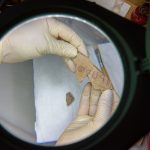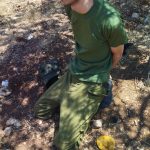Rare Coins from Days of Jewish Revolts Against the Romans Found in Benyamin
Jerusalem, 13 July, 2021 (TPS) -- A recent archeological survey conducted in the Wadi Rashash area of eastern Benjamin by the Institute of Archeology at Bar-Ilan University led to the discovery of rare coins from dramatic periods in Jewish history that teach about the Jewish links to the area.
One coin from the days of the Great Revolt, which ended in 70 CE with the destruction of the Second Temple, was found in Horbat Jaba’it near the Israeli communities of Gush Shilo. Another coin from the days of the Bar-Kochba revolt around 135 CE was found in a cave on the nearby Wadi Rashash cliffs.
The coin from the Great Revolt was minted around 67 CE and bears on one side a vine leaf and the Hebrew inscription “Herut [freedom of] Zion,” and on the other side a chalice and the inscription “Year Two [of the revolt].”
The coin from the Bar-Kochba revolt was minted between 135-134 CE. One side has a Lulav surrounded by a wreath and the inscription “Herut Yerushalayim,” and on the other side bears a musical instrument, probably a harp, and the inscription “Shimon,” the first name of the rebel leader Shimon Ben Kusba, known as Bar-Kochba.
“The symbols and slogans on the Jewish coins during the two Roman wars declared the rebels’ goals: political freedom, the liberation of Jerusalem from the Roman conqueror and the renewal of worship in the Temple,” the researchers who discovered the coins explained.
The coin from the Great Revolt joins other finds from the Second Temple period and from the days of the revolts against the Romans that were discovered in the area, including mikvahs (ritual baths), hiding places, stone vessels and burial caves, all of which belonged to a Jewish settlement that existed in the area until the end of the Bar Kochba revolt.
The Binyamin Council and the Shomrim Al Hanetzach organization, (Preserving the Eternal), a project dedicated to the preservation of the archaeological treasures situated throughout Judea and Samaria, say that the entire area is full of remnants and antiquities of ancient Jewish life, and are being looted and destroyed by the local Arabs.
“The State of Israel allows this to happen and does not take any action to preserve these national and international assets,” they stated, calling for the adoption of a national emergency plan to save the antiquities at the heritage sites and in the open areas.
The cave at Wadi Rashash contained numerous potsherds that were brought to the cave by Jewish refugees during the Bar-Kochba revolt. This cave is one of the dozens in the area that were used by the rebels.
Dr. Dvir Raviv, who led the dig in the area, said that “the coins from Wadi Rashash indicates the presence of a Jewish population in the area until the end of the Bar Kochba revolt, in contrast to a claim previously made in a study that the Jewish settlement north of Jerusalem was destroyed during the Great Revolt. This coin is the first evidence that the region, the northernmost of the districts of Judea in Roman times, was controlled by the Bar-Kochba administration.”
Council Chairman Benjamin Yisrael Ganz stated Tuesday that “it is exciting to see that we live in the area where our ancestors lived in ancient times.”
“We have a national duty to preserve these precious finds that link us here. The State of Israel must take responsibility for its heritage and prevent nationalist looting and corruption,” he demanded.

